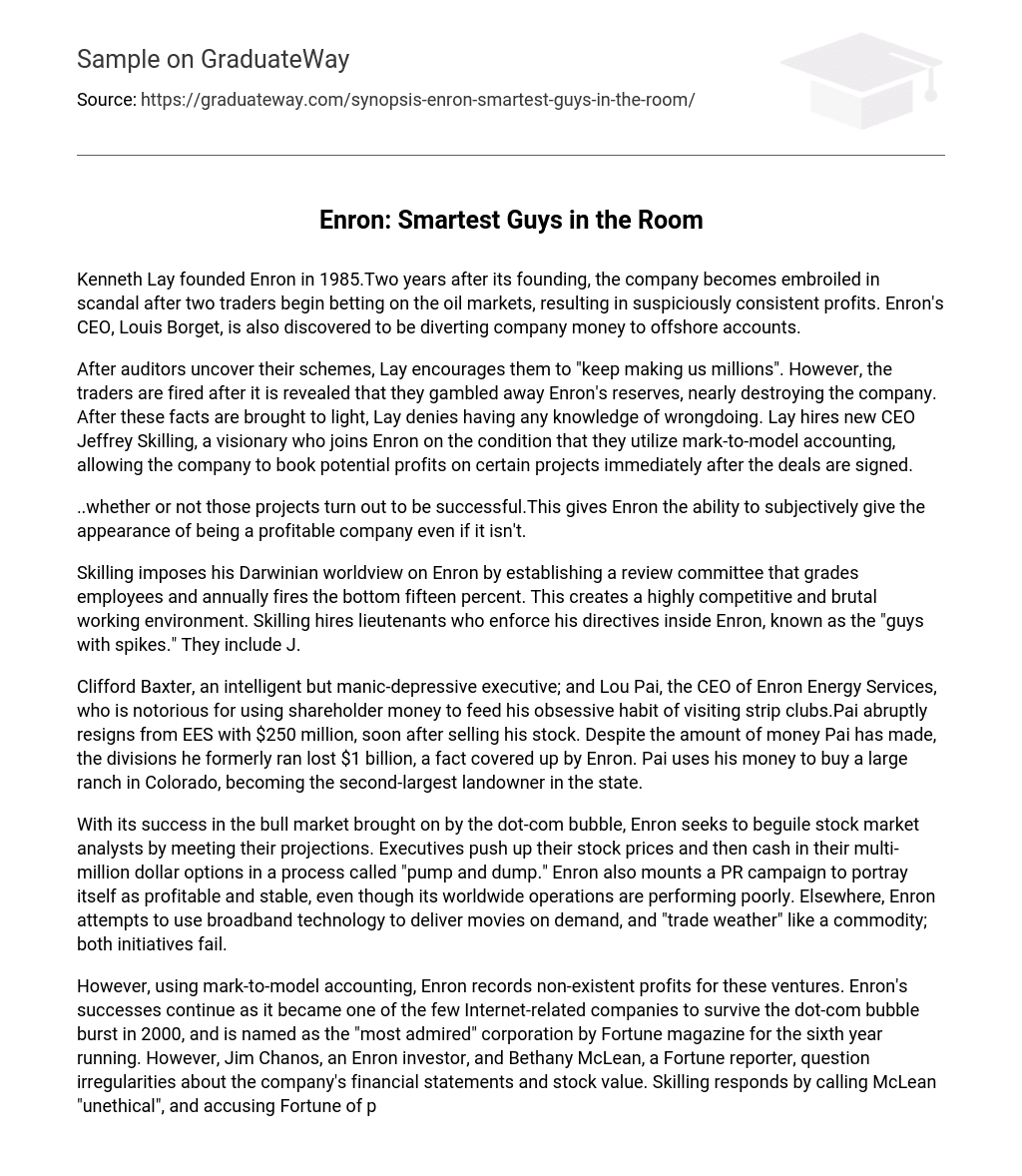Kenneth Lay founded Enron in 1985.Two years after its founding, the company becomes embroiled in scandal after two traders begin betting on the oil markets, resulting in suspiciously consistent profits. Enron’s CEO, Louis Borget, is also discovered to be diverting company money to offshore accounts.
After auditors uncover their schemes, Lay encourages them to “keep making us millions”. However, the traders are fired after it is revealed that they gambled away Enron’s reserves, nearly destroying the company. After these facts are brought to light, Lay denies having any knowledge of wrongdoing. Lay hires new CEO Jeffrey Skilling, a visionary who joins Enron on the condition that they utilize mark-to-model accounting, allowing the company to book potential profits on certain projects immediately after the deals are signed.
..whether or not those projects turn out to be successful.This gives Enron the ability to subjectively give the appearance of being a profitable company even if it isn’t.
Skilling imposes his Darwinian worldview on Enron by establishing a review committee that grades employees and annually fires the bottom fifteen percent. This creates a highly competitive and brutal working environment. Skilling hires lieutenants who enforce his directives inside Enron, known as the “guys with spikes.” They include J.
Clifford Baxter, an intelligent but manic-depressive executive; and Lou Pai, the CEO of Enron Energy Services, who is notorious for using shareholder money to feed his obsessive habit of visiting strip clubs.Pai abruptly resigns from EES with $250 million, soon after selling his stock. Despite the amount of money Pai has made, the divisions he formerly ran lost $1 billion, a fact covered up by Enron. Pai uses his money to buy a large ranch in Colorado, becoming the second-largest landowner in the state.
With its success in the bull market brought on by the dot-com bubble, Enron seeks to beguile stock market analysts by meeting their projections. Executives push up their stock prices and then cash in their multi-million dollar options in a process called “pump and dump.” Enron also mounts a PR campaign to portray itself as profitable and stable, even though its worldwide operations are performing poorly. Elsewhere, Enron attempts to use broadband technology to deliver movies on demand, and “trade weather” like a commodity; both initiatives fail.
However, using mark-to-model accounting, Enron records non-existent profits for these ventures. Enron’s successes continue as it became one of the few Internet-related companies to survive the dot-com bubble burst in 2000, and is named as the “most admired” corporation by Fortune magazine for the sixth year running. However, Jim Chanos, an Enron investor, and Bethany McLean, a Fortune reporter, question irregularities about the company’s financial statements and stock value. Skilling responds by calling McLean “unethical”, and accusing Fortune of publishing her reporting to counteract a positive BusinessWeek piece on Enron.
Three Enron executives, including CFO Andrew Fastow, meet with McLean and her Fortune editor to explain the company’s finances.Fastow creates a network of shell companies designed solely to do business with Enron, for the ostensible dual purposes of sending Enron money and hiding its increasing debt. However, Fastow has a vested financial stake in these ventures, using them to defraud Enron of tens of millions of dollars. Fastow also takes advantage of the greed of Wall Street investment banks, pressuring them into investing in his shell entities and, in effect, conduct business deals with himself.





